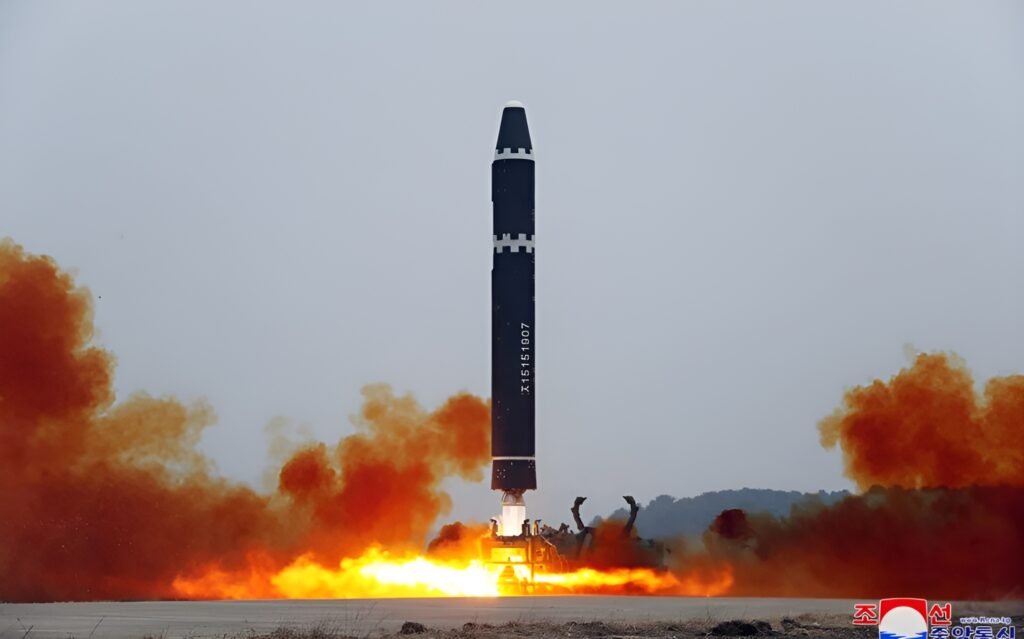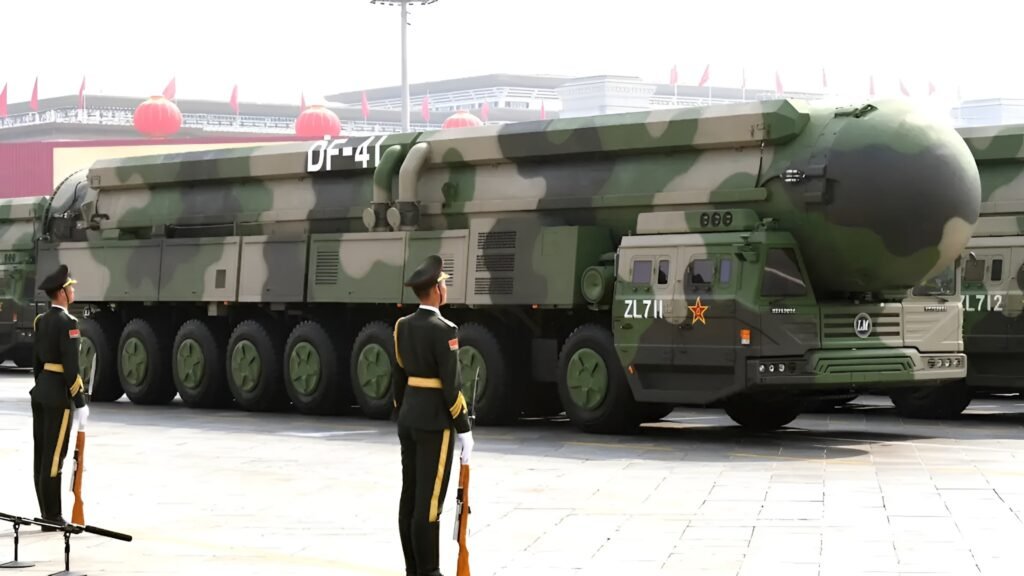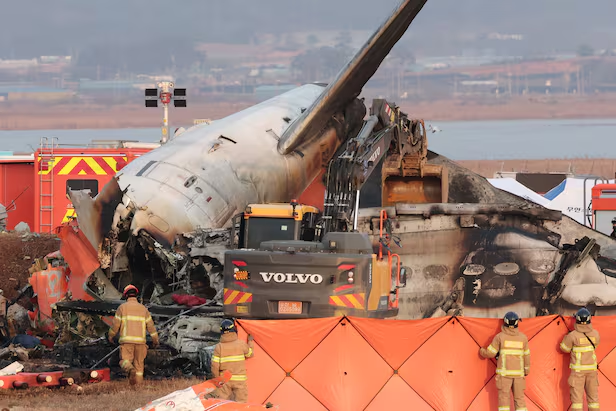
ICBM: Unlocking the Science and Strategy Behind Intercontinental Ballistic Missiles
Intercontinental Ballistic Missiles (ICBMs) have been integral to global defense strategy for decades and continue to serve as a crucial strategic stabilizer, particularly in an increasingly perilous world. Although the ICBM is an antiquated technology, recent advancements in testing and deployment have garnered significant interest. This article provides an in-depth analysis of current advancements in ICBMs, examining their impact across various domains, including technological trends and power dynamics.
The Strategic Function of ICBMs
Intercontinental ballistic missiles (ICBMs) possess a minimum range of 5,500 kilometres (3,400 miles) and are mostly employed for the deployment of nuclear warheads. These missiles constitute the foundation of nuclear deterrence, affording nations possessing this capability a means to respond decisively to any perceived threat. Their velocity, precision, and ability to bypass traditional defence mechanisms render them indispensable in any military inventory.
Intercontinental ballistic missiles (ICBMs) function as both deterrents and possible escalatory nuclear weapons, underscoring their geopolitical importance. As recent events have shown, their very existence is often a deterrent to conflict; but their deployment or testing can also heighten tensions.
Russia deploys ICBMs in active warfare

On November 21, 2024, Russia deployed an intercontinental ballistic missile in its conflict with Ukraine. This marked the inaugural deployment of an ICBM in warfare, signifying a significant transformation in military strategy. Ukraine’s Defense Forces claimed the missile, which was likely to have been launched from the southern Russian town of Astrakhan, had hit near Yuzhmash in Dnipro -one of several significant Ukrainian missile production sites.
Although the missile had a conventional warhead, its deployment conveyed a powerful message. Analysts assert that this action was intended to demonstrate Russia’s preparedness to escalate its military operations and convey a message to Western states supporting Ukraine. The final instance of an ICBM being employed in combat has never occurred outside a nuclear setting.
Technological Advancements of North Korean Intercontinental Ballistic Missiles
In October 2024, North Korea declared the successful test of an additional intercontinental ballistic missile, the Hwasongpho-19. It travelled 620 miles at an altitude of 4,776 miles, both of which are records for a North Korean missile.
Executed within days prior of the U.S. elections, this test was a calculated maneuver by North Korea, aimed not only at garnering public attention but also at securing its position in global affairs. The proliferation of ICBM technology in Pyongyang has elicited apprehensions over regional instability, prompting responses from neighboring nations and major powers.
The Advancement of Strategic Missiles in China

These advancements, originating from the subsequent decade but first revealed in 2024, coincide with China’s consistent enhancement of its strategic missile capability. The People’s Liberation Army Rocket Force conducted its first publicly displayed intercontinental ballistic missile test in decades, launching it over its territory into the Pacific Ocean. It demonstrates China’s dedication to revitalising its missile capabilities and establishing a contemporary strategic deterrent.
Amidst a more competitive geopolitical landscape, China has intensified its efforts to assert itself both domestically and globally while addressing potential security concerns. These trends impact regional security dynamics, particularly within the context of the Indo-Pacific area.
The United States and the Sentinel ICBM Program
The LGM-35A Sentinel program is an initiative by the United States to modernize its intercontinental ballistic missile capabilities in response to evolving global threats. The objective is to substitute obsolete Minuteman III missiles to maintain a credible nuclear deterrence for the U.S.
The Department of Defense has maintained support for the program despite significant cost overruns, with the expected expenditure escalating to $140.9 billion. Sentinel acknowledges the necessity of tackling diverse and developing threats while sustaining pertinent U.S. strategic capabilities in a very dynamic context.
ICBM Technological Developments
Significant progress has been achieved in ICBM technology since the initial development and deployment of these weapons; modern systems incorporate many enhancements to guarantee their effectiveness and reliability. Principal innovations comprise:
Numerous contemporary ICBMs possess the capability to transport Multiple Independently Targetable Reentry Vehicles (MIRVs), enabling them to deliver multiple warheads to distinct targets. Such an ability makes them more of a deterrent and more complex to defend against with missiles.
Enhanced guiding Systems: Progress in guiding technology has resulted in more precise and accurate ICBMs by reducing the margin of error in target localization.
Hypersonic Glide Vehicle (HGV): Nations are employing hypersonic technology in intercontinental ballistic missiles (ICBMs), enabling the missile to exceed speeds of five times the speed of sound and maneuver along its trajectory, rendering interception exceedingly difficult.
Survivability Enhanced by Stealth Technology: The progressive decrease of radar signatures in ICBMs facilitates stealthy survivability against intercepting missiles’ radar systems.
Strategic Ramifications and Worldwide Outcomes
The strategic ramifications of ICBM advancements and deployment outlined thereafter are significant for world security. As nations enhance their capabilities, the potential for error and escalation increases.
The progress of monitoring intercontinental ballistic missiles (ICBMs) across time is characterized by arms races driven by prominent ICBM tests and the competition among major nations to surpass one another in capability and preparedness.
The Dual Nature of Deterrence and Provocation: Intercontinental Ballistic Missiles (ICBMs) serve as formidable deterrents; but their testing and deployment may be perceived as provocations, exacerbating tensions between prospective rivals.
The emergence and deployment of advanced ICBM systems provide technical obstacles to certain existing arms control agreements, like as the fresh START pact, and underscore the necessity for fresh bilateral or multilateral negotiations over arms reduction.
Intercontinental Ballistic Missiles remain fundamental to Defence Geopolitics, serving as both a deterrent and a destructive weapon. Russia’s recent progress and North Korea’s ongoing interest in these weapons, influenced by fresh discoveries from China and the U.S., underscore their significance in an unpredictable world long into the twenty-first century.
While countries are expanding the reach of their ICBM systems, the globe must walk a tightrope between security and escalation. However, via diplomacy, arms control, and global collaboration, those risks can be mitigated to promote a sustainable and stable future for all.
For more insightful news updates visit Dailyforesight



